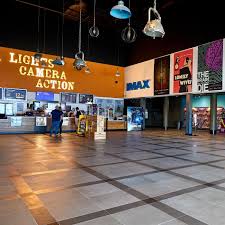
The Light Cambridge: An In-Depth Overview
Location and Venue
Setting:
The Light Cambridge is ideally located within the historic and picturesque city of Cambridge, renowned for its academic institutions and cultural heritage. The venue may be situated near landmarks that enhance its appeal, such as university buildings, gardens, and museums, providing an inviting backdrop for visitors.
Architecture:
The architectural design of The Light Cambridge is likely a blend of modern aesthetics and traditional elements. Large windows may allow natural light to flood the interior, creating a warm and welcoming atmosphere. Open floor plans can facilitate a variety of layouts for different events, while art installations may adorn the space, adding to its dynamic character.

Events and Activities
Diverse Programming:
The Light Cambridge could host a wide range of events, ensuring that there is something for everyone. This might include:
Art Exhibitions: Regularly rotating exhibitions featuring both established and emerging artists, showcasing contemporary works that provoke thought and inspire creativity. Themes may vary from local culture to global issues, encouraging dialogue among attendees.

Workshops and Classes: Opportunities for the community to engage in hands-on learning experiences. These could range from painting and sculpture to digital art and photography, catering to all skill levels. Workshops may also incorporate discussions on art theory and practice.
Performances: The venue might feature performances by local theater companies, musicians, and dancers, providing a platform for artistic expression and community talent. These performances can range from intimate shows to larger productions.
Lectures and Panels: Educational events featuring guest speakers, artists, and scholars discussing various topics related to art, culture, and social issues. These events may foster intellectual engagement and inspire critical thinking.
Artistic Focus
Interdisciplinary Collaboration:
The Light Cambridge may prioritize interdisciplinary projects that bring together artists from different backgrounds and fields. This could involve collaborations between visual artists, musicians, writers, and scientists, promoting innovative approaches to creativity.
Technology in Art:
Embracing advancements in technology, The Light Cambridge might explore the intersection of art and digital media. This could include exhibitions featuring virtual reality, interactive installations, and digital art, appealing to tech-savvy audiences.

Community Engagement
Outreach Programs:
Recognizing the importance of community involvement, The Light Cambridge may implement outreach initiatives designed to engage diverse populations. Programs could target schools, underserved communities, and local organizations, fostering a sense of belonging and encouraging participation in the arts.
Volunteer Opportunities:
The venue might offer volunteer positions that allow community members to contribute to its operations. This could include assisting with events, helping with marketing, or guiding tours, creating a sense of ownership and pride among participants.
Feedback Mechanisms:
To ensure that programming meets community needs, The Light Cambridge could solicit feedback from visitors and participants. This input might shape future events and initiatives, fostering a responsive and inclusive environment.
Accessibility
Inclusive Design:
The Light Cambridge likely prioritizes accessibility, ensuring that individuals of all abilities can enjoy its offerings. This may include wheelchair ramps, accessible restrooms, and sensory-friendly events tailored for those with different needs.
Outreach to Diverse Audiences:
The venue may actively seek to engage marginalized communities, providing programs that are culturally relevant and accessible. This could involve offering events at various times, providing materials in multiple languages, or collaborating with local organizations to reach underrepresented groups.
Future Developments
Expansions and Innovations:
Looking ahead, The Light Cambridge may have plans for future developments that enhance its offerings. This could include expanding exhibition space, introducing new technology for immersive experiences, or developing partnerships with educational institutions to create internship and mentorship programs.
Sustainability Initiatives:
As environmental concerns become increasingly important, The Light Cambridge might explore sustainable practices. This could involve using eco-friendly materials for installations, implementing recycling programs, and hosting events that raise awareness about climate change and sustainability.
Conclusion
In summary, The Light Cambridge represents a vibrant cultural hub that not only showcases art but also actively engages with the community. Through diverse programming, interdisciplinary collaboration, and a commitment to accessibility, it seeks to inspire creativity and foster connections among individuals from all walks of life. Its impact on the local art scene and community will likely continue to grow, making it a significant asset to Cambridge’s rich cultural landscape.
Location and Venue
Setting:
The Light Cambridge is ideally located within the historic and picturesque city of Cambridge, renowned for its academic institutions and cultural heritage. The venue may be situated near landmarks that enhance its appeal, such as university buildings, gardens, and museums, providing an inviting backdrop for visitors.
Architecture:
The architectural design of The Light Cambridge is likely a blend of modern aesthetics and traditional elements. Large windows may allow natural light to flood the interior, creating a warm and welcoming atmosphere. Open floor plans can facilitate a variety of layouts for different events, while art installations may adorn the space, adding to its dynamic character.
Events and Activities
Diverse Programming:
The Light Cambridge could host a wide range of events, ensuring that there is something for everyone. This might include:
- Art Exhibitions: Regularly rotating exhibitions featuring both established and emerging artists, showcasing contemporary works that provoke thought and inspire creativity. Themes may vary from local culture to global issues, encouraging dialogue among attendees.
- Workshops and Classes: Opportunities for the community to engage in hands-on learning experiences. These could range from painting and sculpture to digital art and photography, catering to all skill levels. Workshops may also incorporate discussions on art theory and practice.
- Performances: The venue might feature performances by local theater companies, musicians, and dancers, providing a platform for artistic expression and community talent. These performances can range from intimate shows to larger productions.
- Lectures and Panels: Educational events featuring guest speakers, artists, and scholars discussing various topics related to art, culture, and social issues. These events may foster intellectual engagement and inspire critical thinking.
Artistic Focus
Interdisciplinary Collaboration:
The Light Cambridge may prioritize interdisciplinary projects that bring together artists from different backgrounds and fields. This could involve collaborations between visual artists, musicians, writers, and scientists, promoting innovative approaches to creativity.
Technology in Art:
Embracing advancements in technology, The Light Cambridge might explore the intersection of art and digital media. This could include exhibitions featuring virtual reality, interactive installations, and digital art, appealing to tech-savvy audiences.
Community Engagement
Outreach Programs:
Recognizing the importance of community involvement, The Light Cambridge may implement outreach initiatives designed to engage diverse populations. Programs could target schools, underserved communities, and local organizations, fostering a sense of belonging and encouraging participation in the arts.
Volunteer Opportunities:
The venue might offer volunteer positions that allow community members to contribute to its operations. This could include assisting with events, helping with marketing, or guiding tours, creating a sense of ownership and pride among participants.
Feedback Mechanisms:
To ensure that programming meets community needs, The Light Cambridge could solicit feedback from visitors and participants. This input might shape future events and initiatives, fostering a responsive and inclusive environment.
Accessibility
Inclusive Design:
The Light Cambridge likely prioritizes accessibility, ensuring that individuals of all abilities can enjoy its offerings. This may include wheelchair ramps, accessible restrooms, and sensory-friendly events tailored for those with different needs.
Outreach to Diverse Audiences:
The venue may actively seek to engage marginalized communities, providing programs that are culturally relevant and accessible. This could involve offering events at various times, providing materials in multiple languages, or collaborating with local organizations to reach underrepresented groups.
Future Developments
Expansions and Innovations:
Looking ahead, The Light Cambridge may have plans for future developments that enhance its offerings. This could include expanding exhibition space, introducing new technology for immersive experiences, or developing partnerships with educational institutions to create internship and mentorship programs.
Sustainability Initiatives:
As environmental concerns become increasingly important, The Light Cambridge might explore sustainable practices. This could involve using eco-friendly materials for installations, implementing recycling programs, and hosting events that raise awareness about climate change and sustainability.
Conclusion
In summary, The Light Cambridge represents a vibrant cultural hub that not only showcases art but also actively engages with the community. Through diverse programming, interdisciplinary collaboration, and a commitment to accessibility, it seeks to inspire creativity and foster connections among individuals from all walks of life. Its impact on the local art scene and community will likely continue to grow, making it a significant asset to Cambridge’s rich cultural landscape .For more deteil please visit techwebinsights.com





